Themed collection Microfluidics for hematology

Technologies for measuring red blood cell deformability
Advances in microfluidic technologies for measuring red blood cell deformability have surpassed traditional methods in terms of sensitivity, throughput, and ease of use. This review describes, compares, and covers applications of these technologies.
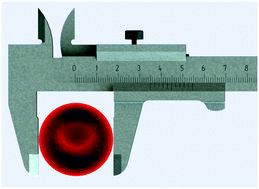
Lab Chip, 2022,22, 1254-1274
https://doi.org/10.1039/D1LC01058A
Point of care whole blood microfluidics for detecting and managing thrombotic and bleeding risks
Microfluidic techniques for the studying hemostatic processes have enabled research into disease, drug action, and biophysical phenomena. Refinement of these techniques from “chip in a lab” to “point-of-care” will enable improved clinical testing.
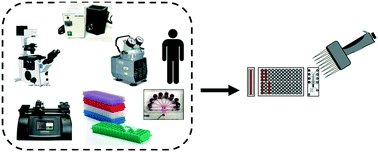
Lab Chip, 2021,21, 3667-3674
https://doi.org/10.1039/D1LC00465D
The role of liquid biopsies in prostate cancer management
This review describes recent advances in isolation and detection technology for circulating biomarkers. The clinical studies based on liquid biopsy results are summarized to provide a perspective on the role of such results in prostate cancer management.
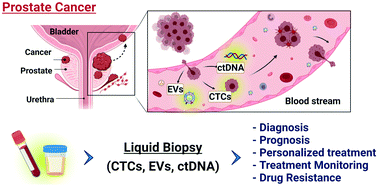
Lab Chip, 2021,21, 3263-3288
https://doi.org/10.1039/D1LC00485A
Emerging point-of-care technologies for anemia detection
In this critical review, emerging non-invasive and minimally invasive point-of-care anemia detection technologies are discussed, highlighting future directions and the need for multiplexed approaches and integrated disease etiology identification.
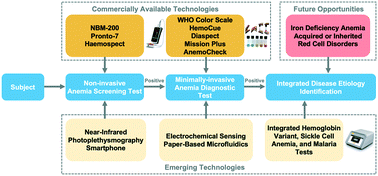
Lab Chip, 2021,21, 1843-1865
https://doi.org/10.1039/D0LC01235A
Binding properties of flowing fibrin-targeted microbubbles evaluated with a thrombus-embedded microchannel
We design a thrombus-embedded microchannel and verify that our fibrin-targeted microbubbles bind firmly to the thrombus under blood flow shear rates.
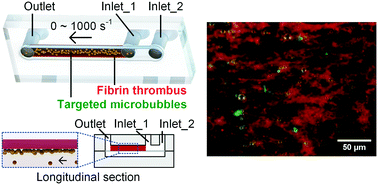
Lab Chip, 2022,22, 2292-2298
https://doi.org/10.1039/D1LC01037A
Assessing red blood cell deformability from microscopy images using deep learning
A microfluidic ratchet sorting device is used to separate RBCs based on deformability. Sorted cells are imaged using optical microscopy and are used to train and test a deep learning network to classify the cells based on deformability.
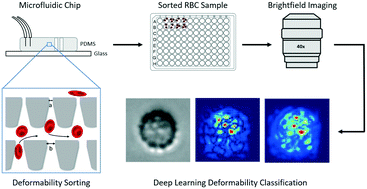
Lab Chip, 2022,22, 26-39
https://doi.org/10.1039/D1LC01006A
Ultrathin silicon nitride membrane with slit-shaped pores for high-performance separation of circulating tumor cells
An ultrathin (200 nm) silicon nitride filtering membrane with slit-shaped pores for high-performance capture of CTCs.
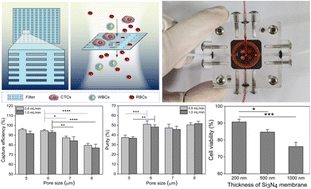
Lab Chip, 2022,22, 3676-3686
https://doi.org/10.1039/D2LC00703G
Immunomagnetic leukocyte differential in whole blood on an electronic microdevice
A cartridge-based, disposable magnetophoretic cytometer testing 3-part leukocyte differentials for point-of-care or self-testing applications.

Lab Chip, 2022,22, 2331-2342
https://doi.org/10.1039/D2LC00137C
Feature tracking microfluidic analysis reveals differential roles of viscosity and friction in sickle cell blood
We present a method that combines microfluidic systems and object-tracking computational technologies to evaluate the contributions of effective viscosity and wall friction to the overall resistance in blood from patients with sickle cell disease.

Lab Chip, 2022,22, 1565-1575
https://doi.org/10.1039/D1LC01133B
IL-2 secretion-based sorting of single T cells using high-throughput microfluidic on-cell cytokine capture
Secretion encoding workflow in which cells are co-encapsulated with anti-cytokine capture and detection probes in drops using a parallelized step emulsification device. Cells recovered from the emulsion are analysed and sorted by flow cytometry.
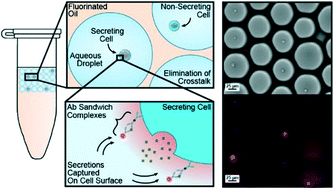
Lab Chip, 2022,22, 1576-1583
https://doi.org/10.1039/D1LC01098K
A 3D-printed transfusion platform reveals beneficial effects of normoglycemic erythrocyte storage solutions and a novel rejuvenating solution
A set of 3D-printed analytical devices were developed to investigate erythrocytes (ERYs) processed in conventional and modified storage solutions used in transfusion medicine.
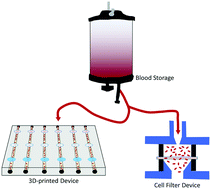
Lab Chip, 2022,22, 1310-1320
https://doi.org/10.1039/D2LC00030J
Filtration-assisted magnetofluidic cartridge platform for HIV RNA detection from blood
Blood plasma extraction using a 3D-printed filtration module coupled with magnetofluidic nucleic acid purification and quantitative PCR in a plastic cartridge enables a rapid, portable solution to screening and assessing HIV viral load.
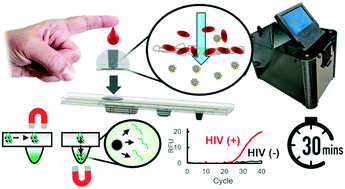
Lab Chip, 2022,22, 945-953
https://doi.org/10.1039/D1LC00820J
Microfluidic capture of chromatin fibres measures neutrophil extracellular traps (NETs) released in a drop of human blood
We measure intact neutrophil extracellular traps (NETs) in a drop of blood.
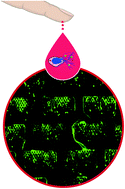
Lab Chip, 2022,22, 936-944
https://doi.org/10.1039/D1LC01123E
Size and density measurements of single sickle red blood cells using microfluidic magnetic levitation
Single cells have unique biophysical signatures that can rapidly change during various disease states.
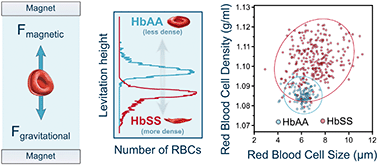
Lab Chip, 2022,22, 683-696
https://doi.org/10.1039/D1LC00686J
Point-of-care blood coagulation assay enabled by printed circuit board-based digital microfluidics
Using printed circuit board-based digital microfluidics, a point-of-care blood coagulation assay was developed to simultaneously assess the clotting tendency and the stiffness of the resultant blood clot.
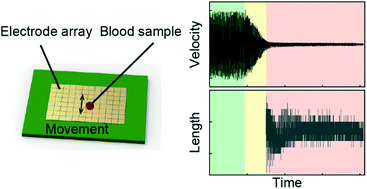
Lab Chip, 2022,22, 709-716
https://doi.org/10.1039/D1LC00981H
Electronic measurement of cell antigen expression in whole blood
A magnetophoretic cytometry chip with integrated purification and multiplexed readout for membrane antigen expression in hematological samples.

Lab Chip, 2022,22, 296-312
https://doi.org/10.1039/D1LC00889G
An automated centrifugal microfluidic assay for whole blood fractionation and isolation of multiple cell populations using an aqueous two-phase system
This paper describes an advanced on-chip whole human blood fractionation and cell isolation process combining an aqueous two-phase system to create complex separation layers with a centrifugal microfluidic platform to control and automate the assay.

Lab Chip, 2021,21, 4060-4070
https://doi.org/10.1039/D1LC00680K
An “occlusive thrombosis-on-a-chip” microfluidic device for investigating the effect of anti-thrombotic drugs
This occlusive thrombosis-on-a-chip microfluidic device can be used to test antithrombotic drugs. The device uses an on-chip chaotic mixer to introduce EDTA and quench downstream coagulation, essential for reliable determination of occlusion time.
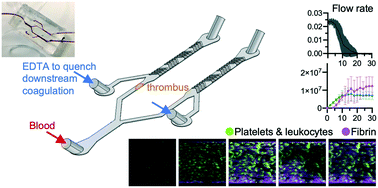
Lab Chip, 2021,21, 4104-4117
https://doi.org/10.1039/D1LC00347J
Point-of-care microchip electrophoresis for integrated anemia and hemoglobin variant testing
A point-of-care diagnostic technology and approach is presented to perform both anemia detection and hemoglobin variant identification in a single test using paper-based microchip electrophoresis.
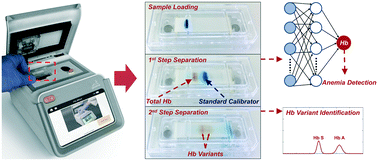
Lab Chip, 2021,21, 3863-3875
https://doi.org/10.1039/D1LC00371B
In vitro assay for single-cell characterization of impaired deformability in red blood cells under recurrent episodes of hypoxia
In vitro single-cell testing of mechanical degradation of red blood cells (RBCs) after undergoing hypoxia fatigue cycles in the microfluidic device, mimicking cyclic oxygen tension variations RBCs experience during in vivo blood circulation.
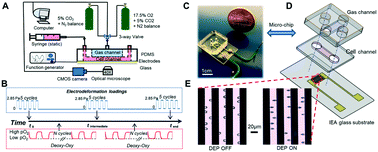
Lab Chip, 2021,21, 3458-3470
https://doi.org/10.1039/D1LC00598G
Direct isolation of circulating extracellular vesicles from blood for vascular risk profiling in type 2 diabetes mellitus
A simple, economical and scalable microfluidic separation technology (ExoDFF) for label-free isolation of circulating extracellular vesicles (EVs) from whole blood.
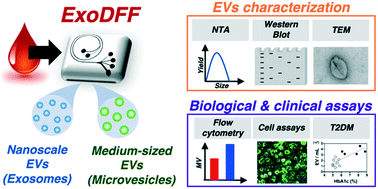
Lab Chip, 2021,21, 2511-2523
https://doi.org/10.1039/D1LC00333J
Real-time red blood cell counting and osmolarity analysis using a photoacoustic-based microfluidic system
We developed an on-chip photoacoustic (PA) flow cytometry microfluidic chip for rapid red blood cell counting and osmolarity measurement.
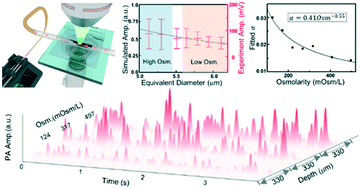
Lab Chip, 2021,21, 2586-2593
https://doi.org/10.1039/D1LC00263E
Fundamentals of integrated ferrohydrodynamic cell separation in circulating tumor cell isolation
We present the fundamental theory and experimental validations of an integrated ferrohydrodynamic cell separation (iFCS) method that can isolate circulating tumor cells with a high recovery rate.

Lab Chip, 2021,21, 1706-1723
https://doi.org/10.1039/D1LC00119A
Rapid and precise tumor cell separation using the combination of size-dependent inertial and size-independent magnetic methods
A three-stage i-Mag device combines the passive inertial microfluidics and the active magnetophoresis method for rapid, precise, and tumor antigen-independent separation of rare tumor cells from blood.

Lab Chip, 2021,21, 1409-1417
https://doi.org/10.1039/D0LC01223H
Microfluidic electrical impedance assessment of red blood cell-mediated microvascular occlusion
Microfluidic Impedance Red Cell Assay (MIRCA) is integrated with capillary network-inspired micropillar arrays and electrical impedance sensing electrodes to enable standardized assessment of red blood cell-mediated microvascular occlusion.
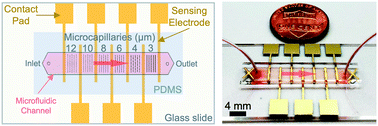
Lab Chip, 2021,21, 1036-1048
https://doi.org/10.1039/D0LC01133A
Rapid isolation of circulating cancer associated fibroblasts by acoustic microstreaming for assessing metastatic propensity of breast cancer patients
We demonstrate a label free and high-throughput microbubble-based acoustic microstreaming technique to isolate rare circulating cells from cancer patients with a capture efficiency of 94% while preserving cell functional integrity within 8 minutes.
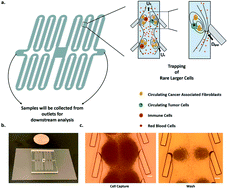
Lab Chip, 2021,21, 875-887
https://doi.org/10.1039/D0LC00969E
Vibration motor-integrated low-cost, miniaturized system for rapid quantification of red blood cell aggregation
A low-cost portable device was developed with a coin vibration motor for quantification of red blood cell aggregation.
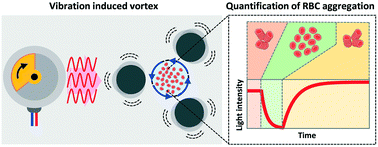
Lab Chip, 2020,20, 3930-3937
https://doi.org/10.1039/D0LC00619J
Enhancement of inflection point focusing and rare-cell separations from untreated whole blood
Inertial lift force towards inflection points is enhanced by the combined effect of U-shape channel and co-flow, which enables unprecedented high-throughput cell separations from untreated whole blood.
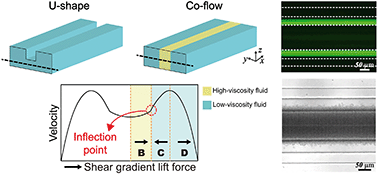
Lab Chip, 2020,20, 2861-2871
https://doi.org/10.1039/D0LC00309C
Microfluidic assessment of red blood cell mediated microvascular occlusion
A gradient of microcapillary networks and microfluidic anastomoses enable standardized quantitative assessment of red blood cell mediated microvascular occlusion.
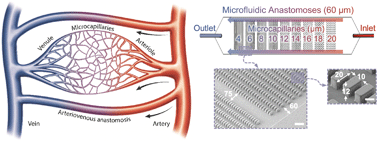
Lab Chip, 2020,20, 2086-2099
https://doi.org/10.1039/D0LC00112K
About this collection
A collection of recent reviews and research papers focusing on the topic of microfluidics for hematology published in Lab on a Chip. This topic area is currently the focus of a thematic collection in this field, led by Thought leaders Yoon-Kyoung Cho, Wilbur Lam and Abraham Lee.